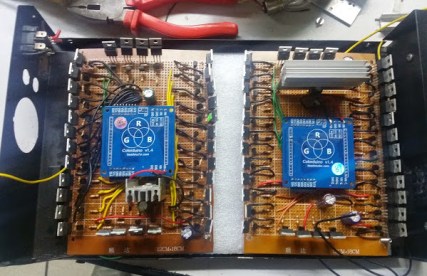DIY TV-B-Gone is A-OK
Where won’t they put a TV these days? We’ve even seen one creeping behind semi-transparent mirror film in the ladies’ room of a sports bar, though that one didn’t last long. Up until that moment, we had never wished so hard for a TV-B-Gone, especially one as small and powerful as this DIY version by [Constructed].
The best thing about [Constructed]’s DIY TV-B-Gone is the strength of signal, though the size is nothing to sneeze at. That’s a 10-watt array or IR LEDs out of a security camera, and you can see how much brighter it is than a single IR LED in the video after the break.
Packed inside this minty enclosure is an Arduino Nano, which holds all the TV power-off codes known to hackers and fires them off in quick succession. [Constructed] salvaged a MOSFET from an electronic speed controller to drive that LED array, and there’s a voltage booster board to raise the 3.7V lithium battery to 5V. [Constructed] hasn’t really had the chance to test this out in public what with the global pandemic and all, but was able to verify a working distance of 40 feet inside the house.
Don’t care for such a raw look? Hide your zapper inside a toy, like this sonic screwdriver version.


 The project took around 450 meters of RGB strips controlled by
The project took around 450 meters of RGB strips controlled by